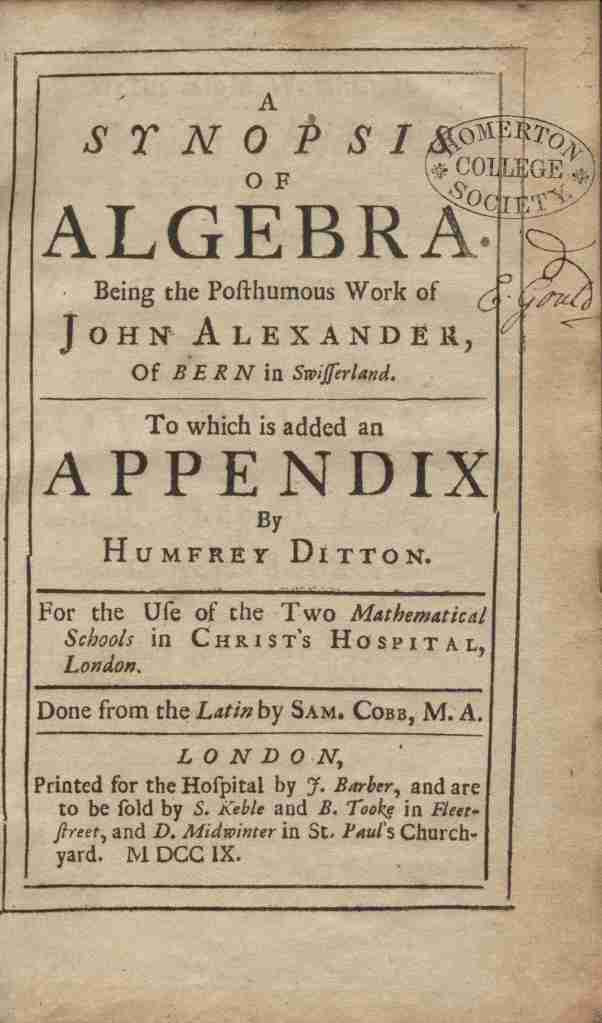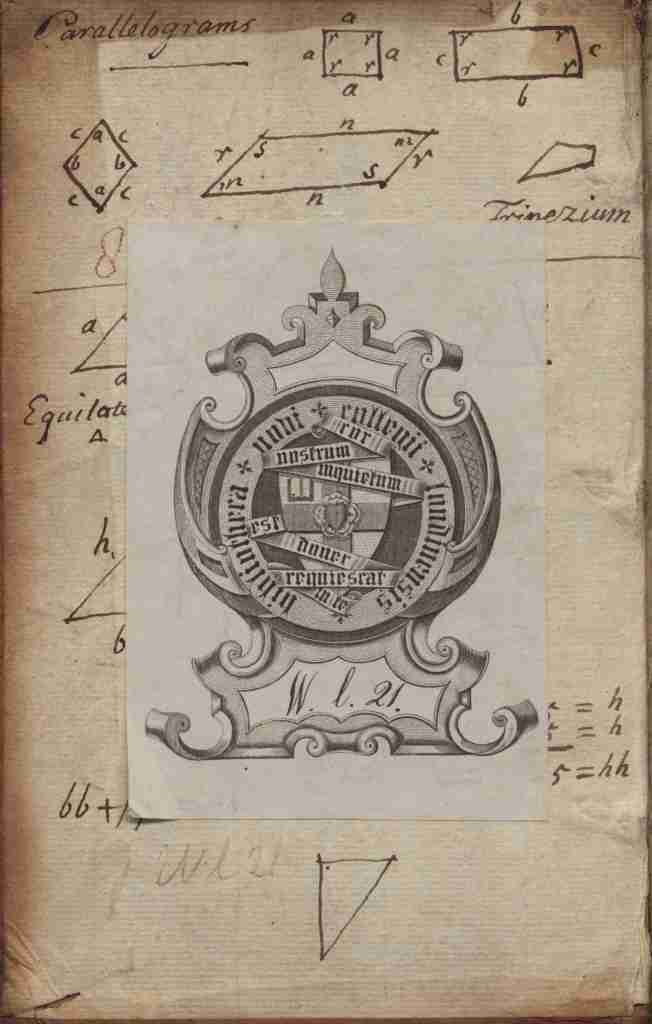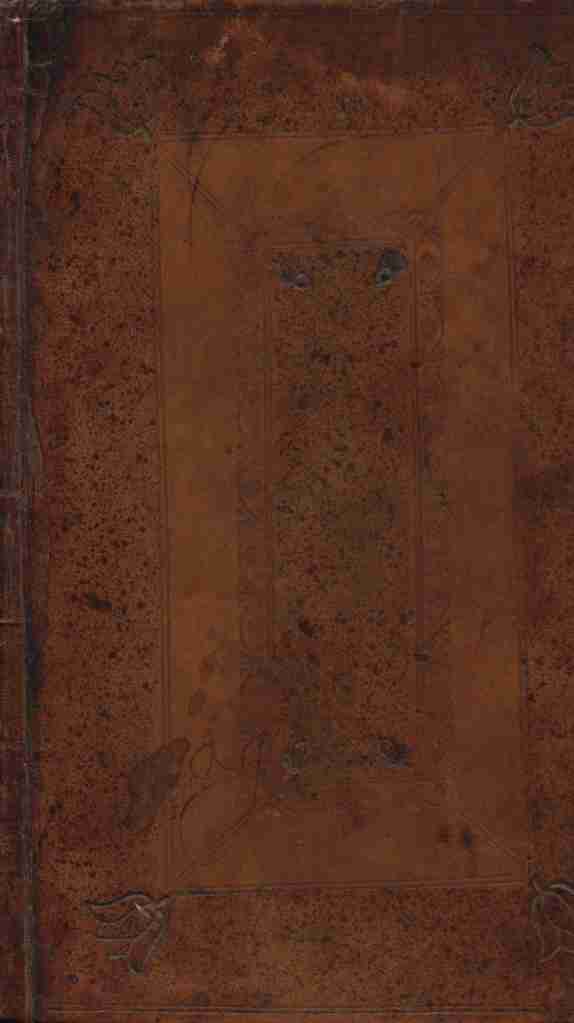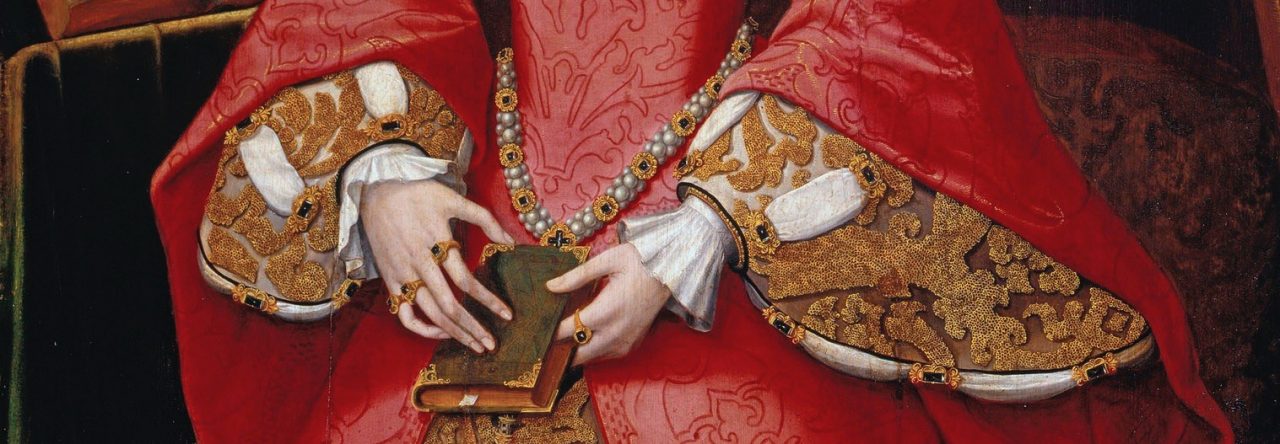“Mathematics” has yet to appear on this site as a subject tag. Admittedly, works of mathematics are uncommon presences in early modern libraries: at the time of writing, only 244 of 18,500 records in the Private Libraries in Renaissance England (PLRE) database are categorized as mathematics, including 12 of the 1950 records currently associated with woman owners. For women as well as men, the most popular forms of mathematical books that do appear in early modern libraries comprise geometry, arithmetic (a serious subject of study at the time, not just one for school textbooks), astronomy, and the applied subjects of mensuration and surveying (books of measurement appear often in the libraries of landowners). The most interesting mathematical work owned by a woman in PLRE to date appears in the library of Lady Anne (Stanhope) Holles (d.1651): Lady Anne owned a copy of the Abrégé recherché de Marie Crous pour tirer la solution de toutes les propositions d’arithmétique (Paris, 1641) (PLRE 298.9). Unacknowledged in her time as a woman of learning, Marie Crous is now credited as the mathematician who introduced the decimal system to France.


In England, publications devoted to algebra—in the period, essentially the theory of equations—started to be published in the second half of the seventeenth century. This 1709 edition of the Synopsis of Algebra by Johannes Alexander is the first and only edition of the English translation of a work first published in Latin in London in 1693 (Wing A913). The Latin and English versions were both published for use in the two “Mathematical Schools” in Christ’s Hospital, London. Founded in 1552 to serve the city’s poor and orphaned children, Christ’s Hospital remains one of the oldest boarding schools in England. Girls were admitted from the school’s founding onwards, so there is a possibility that the Elizabeth Gould who signed this book on both the title-page (“E. Gould”) and the recto of a front flyleaf (“Eliz:th Gould / Her Book”) was associated in some way with Christ’s Hospital. She would not have been affiliated with either of the two mathematical schools, the first of which was founded in 1673 to train boys (known as “mathemats”) as mathematicians and navigators to serve and strengthen British maritime power. The first school, strongly supported by figures such as Samuel Pepys, survives today as the Maths Department at Christ’s Hospital. The title-page also refers to a short-lived “new” school founded in 1706. Backed by Isaac Newton and led by Humphry Ditton (1675-1715), who supplied the appendix to this 1709 edition, this new school closed with the death of Ditton.
Elizabeth Gould’s signatures could be contemporary with the book: the ink and form both indicate an eighteenth-century provenance. As will be discussed below, the book in addition found its way into an institutional library by the early nineteenth century (and possibly was there even by the later eighteenth century). Her signature seems not to match the hand that added the notes and diagrams on “Parallelograms” to the front pastedown, though signatures often differ from other forms of inscription. It is also difficult to match either the signatures or the manuscript notes with confidence to the hand that inscribed “Allgebra” on the book’s tail edge, an uncommonly late appearance of this form of book labeling: the book potentially was stored with the tail edge facing outward. The binding is a contemporary paneled calf.



Elizabeth Gould eludes identification, but evidence of later provenance in this copy suggests some possible cultural context. The title-page is stamped “Homerton College Society.” Homerton College was a small (12-20 students at any one time) dissenting academy in the parish of Hackney, close to London. It was founded in the 1760s as King’s Head Academy and took the name Homerton College in the 1820s, though the book could have been in the school library before the name change: the stamp could have been added after the institutional name change rather than at the time of acquisition. In the 1850s, when admission to English universities was liberalized, Homerton College transferred its theological courses (and evidently some of its library) to New College London, whose bookplate inconveniently covers the pastedown notes on parallelograms. The continuity of institutional ownership from Homerton College to New College confirms that Elizabeth Gould owned the book at some point between its creation for use at Christ’s Hospital in the early eighteenth century and its acquisition by Homerton College in the early nineteenth century, or possibly even by its predecessor King’s Head Academy in the later eighteenth century. The link among these institutions is dissent: Humphry Ditton, the founder of the “new” mathematical school at Christ’s Hospital and contributor to this edition of Alexander’s Synopsis, was an ardent dissenting minister as well as a mathematician. With her record of ownership bookended by associations with dissenting schools—which promoted a “modern” curriculum of science, philosophy, and modern history—Elizabeth Gould seems likely to have pursued her interest in algebra while a member of the period’s dissenting community.
Source: Kinney Center for Interdisciplinary Renaissance Studies, University of Massachusetts Amherst, shelfmark QA154.8 .A5413 1709. Images used with permission.
